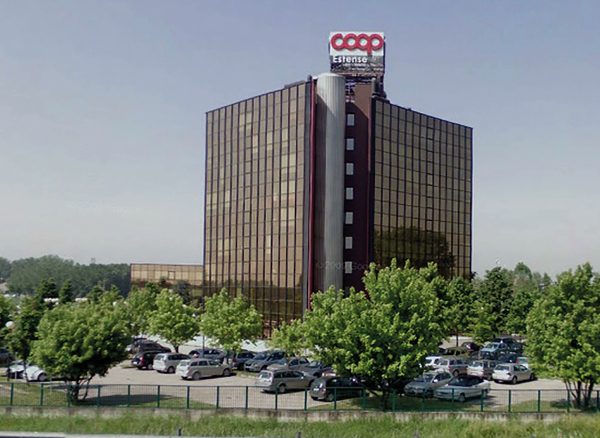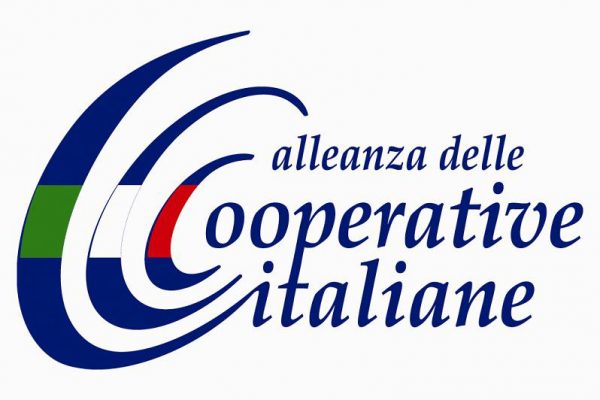Italy has a long and successful tradition of co-operative enterprise. The first co-operatives began in the 1860s and, by the beginning of the 20th century, they were present in every economic sector: consumer, production, agriculture, housing, banking and insurance.
During the period of fascist dictatorship (1922-1945), co-operatives were absorbed into the fascist system of state enterprise. Many co-operators became part of the resistance: many were imprisoned and executed by the fascists or their associates the Nazis. But after World War II, the architects of the new republic of Italy wrote support for co-operation into the Italian constitution. Article 45 of the constitution reads:
“The republic recognises the social function of co-operation with a mutual and non-profit character. The law promotes and favours its growth by the most suitable means and ensures, by appropriate controls, that its character and purposes are respected.”
Supported by the new constitution and by relief of taxation on retained earnings – a privilege not extended to commercial enterprises – co-ops grew quickly in post-war Italy, collaborating with each other and with political interests to rebuild the country’s shattered economy. The growth of manufacturing in the 1970s set back co-operation to some extent but once Italy’s service economy started to develop from the 1980s onwards, the movement boomed.
Today, co-ops are the mainstay of the Italian economy, particularly in the richer north. For example, in Emilia Romagna, one of the richest regions in Italy, there are now an estimated 8,000 co-operative enterprises, which generate an astonishing 40% of the region’s GDP and are its major employers.
Nowhere is the success of Italy’s co-operative model more apparent than in retail. The National Association of Consumer Cooperatives, which trades under the “COOP” brand name, has a turnover of €13bn and an 18% market share. It has 7.4m consumer members, more than 56,000 employees and about 1400 shops ranging from small discount stores to giant hypermarkets. It is formed from a “cluster” of nine large co-operatives, 14 medium-sized ones and nearly a hundred small enterprises. Collectively, these make up Italy’s largest retail conglomerate.
“Clustering” (collaboration) remains a feature of the Italian approach to co-operation to this day. There are three co-operative associations, each associated with different aspects of Italian politics: the largest by far is Lega, traditionally associated with left-wing politics. The three associations compete with each other to some extent, sharpening up the co-operative model and helping to prevent formation of price-fixing cartels. Italian retail co-operatives are widely perceived to give value for money.
But collaboration can all too easily become merger. In the 1970s, as surpluses flatlined and retail co-ops started to lose market share, there was a considerable shakeout: in the Lega family alone, 3,000 small individual societies merged into 200 regional co-ops, and 7,000 small co-op shops were closed. Painful though this was, this restructuring forced down costs and increased efficiency, restoring the fortunes of the retail co-ops and positioning them to participate effectively in the growth of hypermarkets. Today, co-operatives operate about 70 hypermarkets across Italy.

But the price of this has increased concentration in the retail sector – and that concentration is now set to increase. This year, on 3 October, three of the largest members of the COOP network – Adriatica, Estense and NorthWest Consumers – agreed to merge. This takes effect on 1 January 2016.
The merger will create a new mega-co-operative, COOP Alleanza (the name means “alliance”). It will be the largest Italian co-op, with 2.6m consumer members, combined sales of €4.6bn, 334 shops including 45 hypermarkets, and 19,700 employees. Its size and retail coverage means it will occupy a dominant position in the COOP network, rather analogous to the Co-op Group’s dominant position in the UK’s retail co-op network.
Exactly what has driven this merger is unclear. In the UK, the string of mergers that led to the Co-op Group’s dominance came about through three principal drivers:
- poor performance in the co-operative retail sector
- an attempt by carpet-bagger Andrew Regan to buy out the Co-op Group for asset-stripping
- a belief that the Co-op Group could and should be a market leader in the commercially driven, cut-throat UK retail marketplace.
On the face of it, the drivers of this Italian merger appear different. Smaller co-operatives do fall by the wayside from time to time: they are either absorbed by larger ones, or their assets are returned to the COOP’s funding pool and are used to fund new co-operative ventures. But this is a friendly merger of three large, thriving co-operatives, not a takeover of a number of small failing ones, as the Co-op Group did. Carpetbagging, too, is not a major risk for Italian co-operatives, since Italian legislation effectively prevents sale of co-ops or their diversion to non-co-operative principles. And the COOP as a whole is already the market leader in the Italian retail sector.
But the Italian retail environment is becoming increasingly challenging. The COOP’s 2015 report observes that the prolonged recession in Italy has taken its toll.
“The recession is over, at the cost of the tears and blood of Italian families, who have between 2007 and today lost €122bn (€47bn in lower savings and €75bn in reduced consumption),” it says.

Although the economy is showing some signs of recovery, families are still being hurt by high unemployment (currently 12.4%), stagnant wages and a tight government fiscal stance. The tight fiscal stance may also hit co-ops directly if the government – under pressure to increase tax revenues – decides to reduce or eliminate the tax advantages currently enjoyed by co-operatives in return for reinvesting their surpluses rather than distributing them to members.
Meanwhile, competitive pressures are building, as foreign retailers make inroads into the COOP’s traditional heartlands. In Emilia Romagna, for example, the Chinese hypermarket brand Yi Gou has established itself and is gradually taking market share by systematically undercutting COOP’s prices and wages.
The discounter Lidl already has a presence in several towns traditionally dominated by COOP stores, and is no doubt seeking to expand: while its rival, Aldi, is planning an attack on the COOP’s dominance in the discount store marketplace. Globalisation, too, is taking its toll, undermining the COOP’s historic commitment to supporting Italian co-operative suppliers.
Co-operatives are therefore once again under pressure to cut costs and become more efficient. The cost-saving driver for the merger is evident in this comment from the new group’s chairman, Adriano Turrini, who said: “The three co-operatives will continue to implement their respective industrial plans, but from January 1 there will only be one plan and we will evaluate the savings.”
But there is another driver too – and that is the desire to innovate. Earlier this year, at the Expo 15 show in Milan, the COOP showcased its “supermarket of the future”, featuring interactive tables, radical redesign of shelving, digital displays and real-time data visualisation. But it was not at that time clear how it could implement a common “smart shop” strategy across the network, let alone find the resources to pay for it. Currently, the experience of COOP shoppers is something of a postcode lottery.
So is this merger intended to pool resources and create a common strategy, enabling the COOP brand to compete in an increasingly difficult marketplace and innovate for the future? Turrino seems to think so.
Describing the mission of the new COOP Alleanza, he says: “In its name it carries its mission: on one side the strong values of co-operation, on the other the determination to innovate. Both missions have the shareholder at heart.”
If he is right, then this merger may not be the last. We may indeed be witnessing the creation of an Italian Co-op Group.
But the new management of COOP Alleanza should take care to avoid the trap that the Co-op Group fell into. Growth, profits and market share cannot be bought at the price of co-operative principles. Nor can innovation substitute for social responsibility.
The Italian COOP network has a great tradition of co-operation for mutual and social benefit. It should not be diverted from this purpose by the creation of a new Alleanza.

